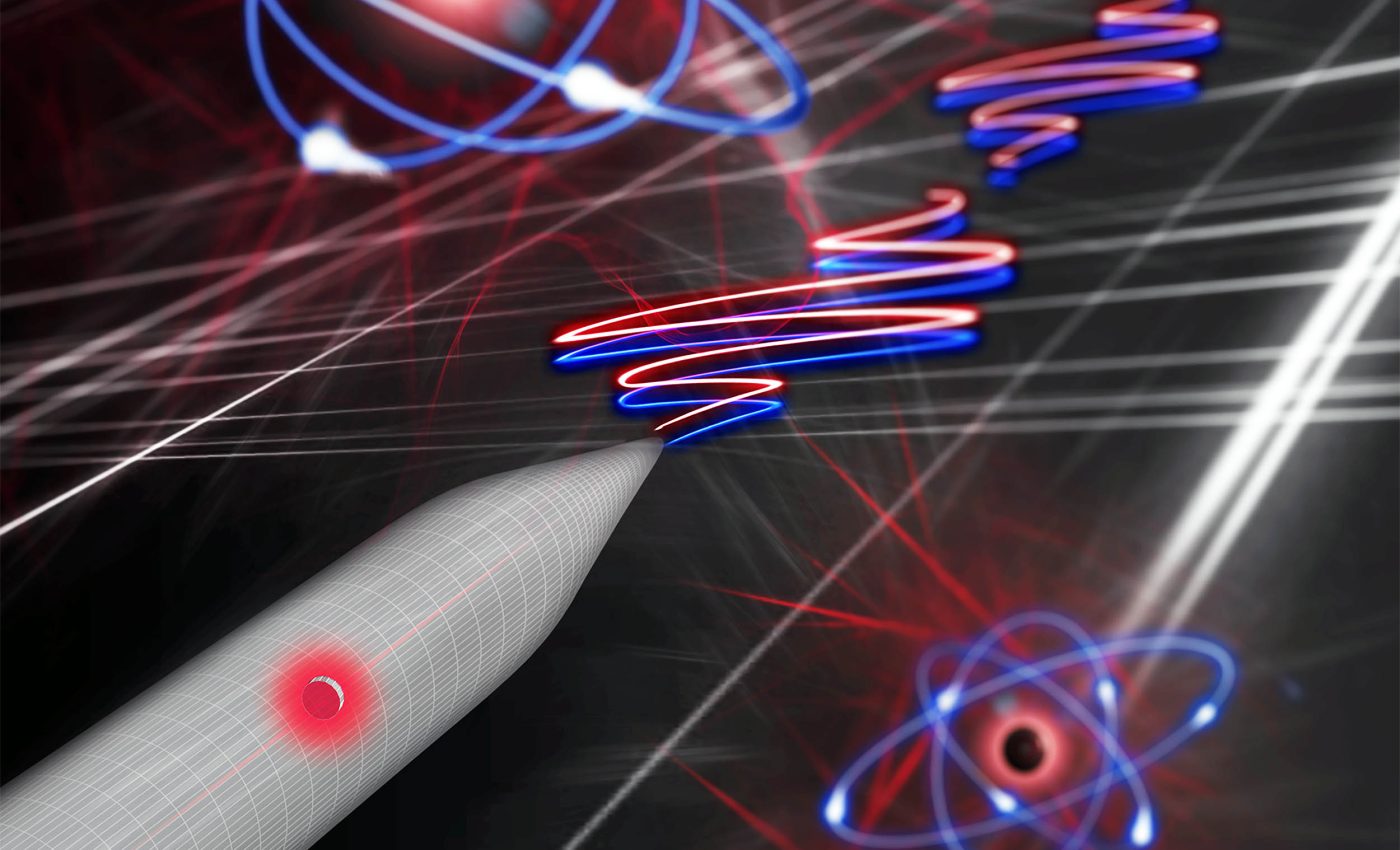
Quantum advantage cuts learning task time from 20 million years to 15 minutes
Quantum advantage just moved from promise to a measured result – not in a computer chip, but in beams of light.
In a new study, a team used entangled light to learn the noise in a complex system with far fewer measurements than any classical method.
They also showed how to certify that the speedup is genuine rather than a lab trick. The result sets a benchmark for optical quantum learning.
Quantum advantage in the lab
Ulrik L. Andersen, a professor at DTU Physics, led the collaboration with colleagues in the United States, Canada, and South Korea. The team worked within DTU’s Center for Macroscopic Quantum States, called BigQ.
The work targets a long-standing goal in quantum science, often summarized as quantum advantage.
That means a quantum device does a well-defined task in less time or with fewer samples than any classical approach can manage under the same rules
The authors focus on learning, not computation. Learning here means extracting the statistical fingerprint of noise in a device to a controlled level of accuracy.
Entanglement and quantum advantage
The group built a photonic setup that runs at telecom wavelengths, using an optical parametric oscillator, or squeezer, to produce entanglement.
Entanglement is a quantum link that correlates measurements of separate light beams beyond what classical physics allows.
They probed an optical channel where many light pulses shared the same noise pattern. By sending one beam through the channel and keeping another as a reference, they could compare the two in a single joint readout.
That joint readout is a continuous-variable Bell measurement, implemented with interference and homodyne detection. It cancels much of the individual measurement noise and boosts the information gained per trial.
The protocol targets the characteristic function of a random displacement process, which is the Fourier partner of the underlying noise distribution.
Reconstructing that function at high spatial frequencies is the hard part that drives the classical cost.
Light can change quantum rules
A 2024 theoretical proof showed that any strategy without an external quantum memory needs exponentially many samples to learn these processes.
The lower bound survives even when the classical learner adapts measurements from shot to shot.
Entangling the probe with a quantum memory breaks that barrier by letting the measurement access correlations that single beams cannot reveal.
The photonic protocol uses two-mode squeezing to supply that resource.
Crucially, the experiment tolerates ordinary optical loss and noise. The advantage comes from how the information is collected, not from a perfect device.
Squeezed light drives the engine
An optical parametric oscillator (OPO) produces pairs of correlated light fields with reduced fluctuations in one quadrature and increased fluctuations in the other.
A comprehensive review explains this two- mode squeezing, the engine that ties probe and memory together.
Temporal multiplexing lets many pulse pairs reuse the same hardware while retaining mode-by-mode correlations.
The joint measurement reads amplitude and phase quadratures simultaneously across the two beams.
The data reconstruction targets high-frequency features of the characteristic function, where tiny peaks encode the structure of the process. That is where a classical learner runs out of samples first.
Classical methods can’t keep up
“We achieve a sample complexity reduction of 11.8 orders of magnitude compared to classical methods without entanglement,” said Andersen.
That statement is supported by direct comparisons between entangled and classical strategies in the same optical platform.
The researchers calculated that, at a generation rate of 1 MHz per mode, a classical system would require more than 20 million years to collect the same amount of data. This highlights the immense time cost implied by their estimates.
To make the edge provable, the team designed a hypothesis-testing game that asks the learner to label a process after a fixed number of uses.
The quantum strategy passed the bar with a success probability unattainable by any classical method, given the same sample budget.
Quantum boost for precision sensing
The method learns noise processes that show up whenever tiny signals ride on light. That includes precision sensing, communication links, and quantum networks.
Squeezed light has already helped gravitational-wave detectors cut noise and see more distant events. A 2019 result reported a clear reach increase for Advanced LIGO when a squeezer was added.
Being able to map noise faster could let those instruments retune more often and push sensitivity further.
It could also speed lab tasks in Raman spectroscopy, dark-matter searches, and microscopic force sensing that depend on accurate noise models.
Entangled light and quantum advantage
This is not a general-purpose quantum computer that breaks encryption or simulates chemistry at scale. It solves a specific learning task based on displacement processes.
The math that certifies the advantage applies to a family of processes and to the estimator used. It does not claim that every photonic learning job will beat classical methods.
The hardware uses modest squeezing and realistic optics, which is a plus for scaling but also sets a limit on resolution.
What lies in the future
Moving to stronger squeezing, better detectors, and adaptive strategies could improve performance.
The experiment runs at telecom wavelengths with off-the-shelf optical parts. It works in the presence of ordinary losses, which strengthens the case that the gain comes from the measurement idea.
The team showed both an empirical gap in reconstruction cost and a certified edge in the hypothesis test.
That pairing is important because it links practical speedups to a standard that rules out classical shortcuts.
The study is published in Science.
—–
Like what you read? Subscribe to our newsletter for engaging articles, exclusive content, and the latest updates.
Check us out on EarthSnap, a free app brought to you by Eric Ralls and Earth.com.
—–













